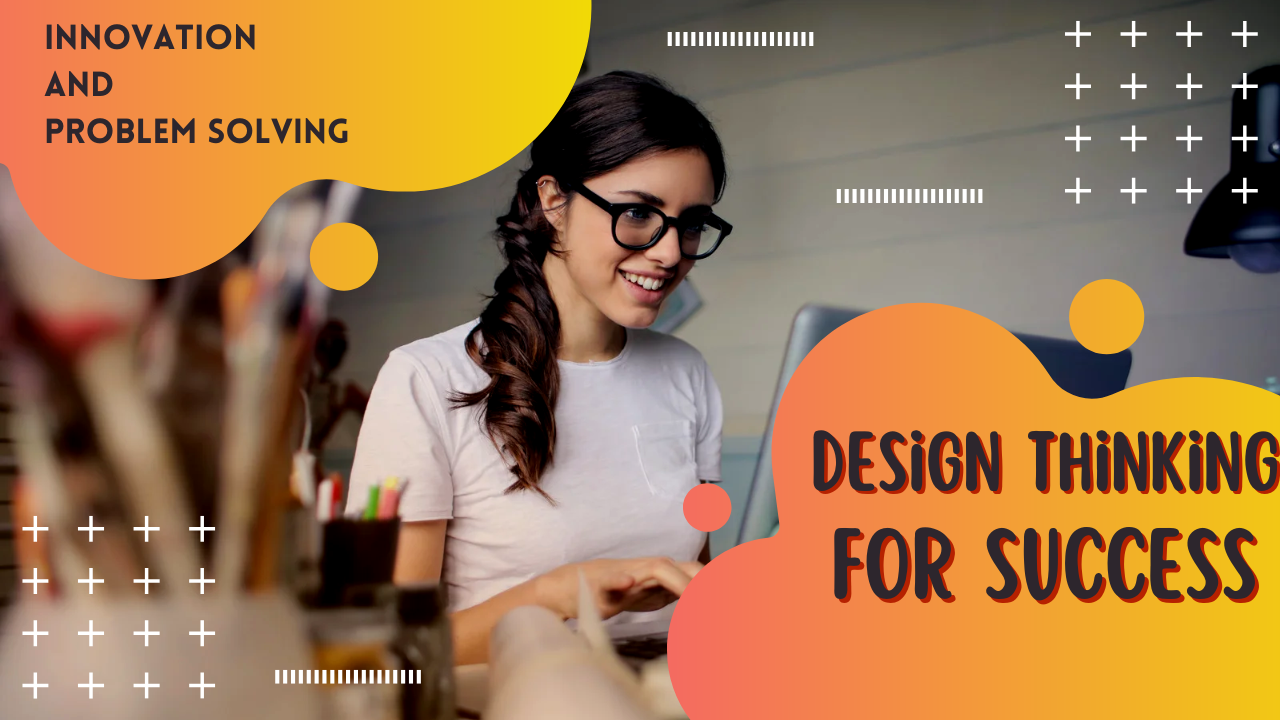Design thinking is a powerful problem-solving methodology that places the user at the heart of the process. It is a human-centered approach that encourages creativity, empathy, and iterative development to create innovative solutions. Originally developed as a way for designers to think through complex problems, design thinking has been widely adopted in various industries, including business, education, healthcare, and technology. This approach focuses on collaboration, empathy, and experimentation, making it an ideal framework for organizations and individuals seeking to solve complex challenges. In this article, we will explore the principles of design thinking, its process, and how it can lead to success.
The Core Principles of Design Thinking
Design thinking is grounded in several key principles that differentiate it from traditional problem-solving approaches. These principles focus on understanding the user, reframing problems, and fostering creativity throughout the solution process. Let’s delve into these core principles:
1. Human-Centered Design
At the heart of design thinking is the principle of human-centered design. This involves deeply understanding the needs, challenges, and desires of the users who will be impacted by the solution. Rather than focusing solely on the problem or technical constraints, design thinking encourages teams to empathize with users and consider their experiences, emotions, and behaviors. This leads to solutions that are not only effective but also meaningful and user-friendly.
2. Embrace Ambiguity
Design thinking encourages a mindset that embraces ambiguity. Many complex problems do not have clear, predefined solutions, and this uncertainty is part of the process. By accepting ambiguity, teams are more open to experimentation and exploration. This willingness to step into the unknown can lead to breakthrough ideas and innovations.
3. Collaboration and Interdisciplinary Teams
Collaboration is a central tenet of design thinking. The process thrives when diverse teams, with varied expertise and perspectives, come together to brainstorm and problem-solve. Interdisciplinary teams can approach a challenge from multiple angles, allowing for more well-rounded and creative solutions. Design thinking promotes an environment where everyone, regardless of their role or expertise, can contribute ideas and insights.
4. Iterative Process
Design thinking is an iterative process, meaning that solutions are refined and improved over time. Rather than attempting to create a perfect solution in one go, design thinking encourages rapid prototyping, testing, and feedback. This cycle allows teams to learn from mistakes, refine their ideas, and create better solutions through continuous iteration.
5. Focus on Solutions, Not Just Problems
While understanding the problem is important, design thinking emphasizes finding solutions. By shifting the focus from just analyzing problems to actively creating solutions, teams are better equipped to generate actionable, creative outcomes. This mindset encourages optimism and motivates teams to seek solutions that can truly make a difference.
The Design Thinking Process
The design thinking process is typically broken down into five key stages: Empathize, Define, Ideate, Prototype, and Test. These stages are not always linear but are often revisited as new insights emerge and solutions evolve. Let’s explore each stage in more detail:
1. Empathize
The first stage of design thinking is all about empathy. In this phase, the goal is to deeply understand the users and their needs. Empathy involves active listening, observing, and engaging with users to uncover their pain points, desires, and motivations. This is often done through interviews, surveys, ethnographic research, and direct observation. By gaining a deep understanding of the user’s experiences, teams can uncover insights that will inform the rest of the design process.
2. Define
Once enough information has been gathered during the empathy phase, the next step is to define the problem. This is where teams synthesize their research and create a clear problem statement that reflects the users’ needs. The problem statement should be framed in a way that is specific enough to guide the design process, but broad enough to allow for creative solutions. A well-defined problem helps set the stage for the ideation phase by ensuring that everyone is focused on addressing the same challenge.
3. Ideate
With a clear understanding of the problem, teams move into the ideation phase. This is where creativity and brainstorming come into play. The goal is to generate a wide variety of ideas and potential solutions, without worrying about feasibility at this stage. Techniques such as brainstorming, mind mapping, and SCAMPER (Substitute, Combine, Adapt, Modify, Put to Another Use, Eliminate, Reverse) can help stimulate creative thinking. During ideation, the focus is on quantity, with the belief that the more ideas generated, the higher the chances of finding innovative solutions.
4. Prototype
The prototype stage involves turning the best ideas from the ideation phase into tangible representations. These prototypes can take many forms, from low-fidelity sketches and wireframes to high-fidelity mockups or working models. The purpose of prototyping is to quickly test ideas, gather feedback, and learn what works and what doesn’t. Prototypes allow teams to experiment and visualize concepts, making it easier to refine and improve the design.
5. Test
Testing is the stage where prototypes are put into the real world to be tested by users. During testing, teams observe how users interact with the solution and gather feedback to understand what works, what needs improvement, and what might be missing. Testing often leads to further iteration, with teams returning to earlier stages (such as prototyping or ideation) to refine their solutions based on user feedback. This iterative process ensures that the final solution is well-aligned with the users’ needs and expectations.
Why Design Thinking Leads to Success
Design thinking has proven to be an effective approach for driving innovation and solving complex problems across industries. Here are several reasons why design thinking leads to success:
1. Focus on the User
The human-centered nature of design thinking ensures that solutions are relevant and meaningful to the end user. By prioritizing user needs and experiences, design thinking leads to products and services that resonate with users and deliver tangible value.
2. Encourages Innovation
The iterative and collaborative nature of design thinking fosters an environment of experimentation and creativity. By encouraging teams to explore multiple solutions, test ideas, and refine them, design thinking often leads to innovative breakthroughs that might not have been possible through traditional approaches.
3. Flexible and Adaptable
Design thinking is a flexible process that can be adapted to various industries, challenges, and organizational contexts. Whether solving a technical problem, designing a new product, or improving a service, design thinking can be applied to diverse challenges, making it a versatile and powerful tool.
4. Reduces Risk
The iterative nature of design thinking helps mitigate risks by allowing teams to test concepts early and often. This reduces the chances of investing in a solution that doesn’t meet user needs or expectations. By gathering feedback at each stage, teams can make adjustments before launching a final product or service.
5. Promotes Collaboration
By bringing together individuals with diverse expertise, design thinking encourages collaboration and the exchange of ideas. This cross-disciplinary approach ensures that solutions are well-rounded and consider a variety of perspectives, leading to better outcomes.
Conclusion
Design thinking is more than just a problem-solving methodology; it is a mindset that fosters creativity, collaboration, and empathy. By focusing on the user, embracing ambiguity, and continuously iterating on solutions, design thinking leads to innovative, effective outcomes that can drive success in any field. Whether you’re designing a product, improving a service, or tackling a complex challenge, design thinking provides a roadmap to success that places people at the center of the solution process.










